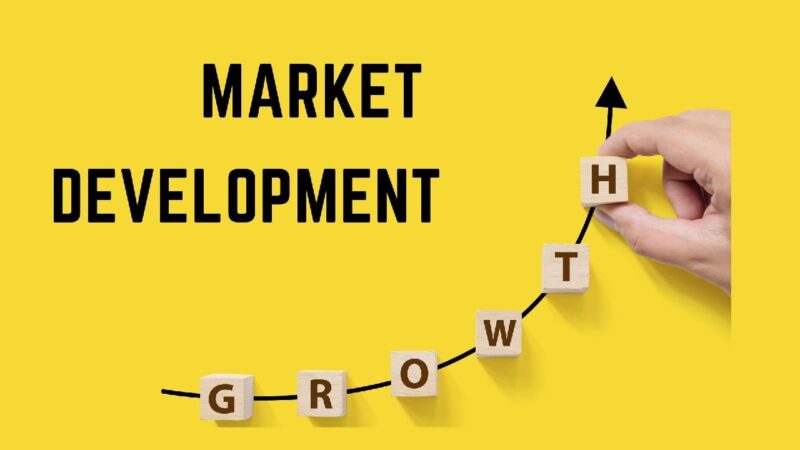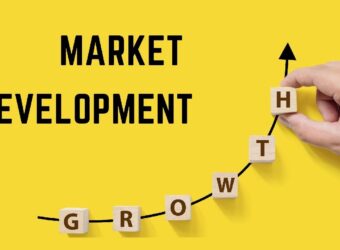Inbio is a all in one personal portfolio WordPress theme. You can customize everything.

About Me
Lorem ipsum dolor sit amet, consectetur adipisicing elit. Eum in eos saepe ipsa cupiditate accusantium voluptatibus quidem nam, reprehenderit, et necessitatibus adipisci labore sit veritatis vero tempore sequi at sed facere dolore. Quae obcaecati eius quasi doloribus illum minus fugit.
Lorem ipsum dolor sit amet, consectetur adipisicing elit. Eum in eos saepe ipsa cupiditate accusantium voluptatibus quidem nam, reprehenderit,
What I Do
Business Stratagy
I throw myself down among the tall grass by the stream as Ilie close to the earth.
Business Stratagy
I throw myself down among the tall grass by the stream as Ilie close to the earth.
My Best Work
The services provice for Android user
Lorem ipsum dolor sit amet consectetur adipisicing elit. Modi, quidem dignissimos. Perspiciatis fuga soluta officiis eligendi labore, omnis ut velit vitae suscipit alias cumque temporibus.
Responsive design
Quiz builder
Certification
Stats & reports
Retina ready

The services provice for Development
Lorem ipsum dolor sit amet consectetur adipisicing elit. Modi, quidem dignissimos. Perspiciatis fuga soluta officiis eligendi labore, omnis ut velit vitae suscipit alias cumque temporibus.
Responsive design
Quiz builder
Certification
Stats & reports
Retina ready

The services provice for Android user
Lorem ipsum dolor sit amet consectetur adipisicing elit. Modi, quidem dignissimos. Perspiciatis fuga soluta officiis eligendi labore, omnis ut velit vitae suscipit alias cumque temporibus.
Responsive design
Quiz builder
Certification
Stats & reports
Retina ready

Testimonial
Amy Smith Engineer
@mr_rasel Ypur plaser well for your template from @mr_faruk There is no is best issueusing it too. It'll really speed up the design and development process :).
Amy Smith Engineer
@mr_rasel Ypur plaser well for your template from @mr_faruk There is no is best issueusing it too. It'll really speed up the design and development process :).
Amy Smith Engineer
@mr_rasel Ypur plaser well for your template from @mr_faruk There is no is best issueusing it too. It'll really speed up the design and development process :).
Amy Smith Engineer
@mr_rasel Ypur plaser well for your template from @mr_faruk There is no is best issueusing it too. It'll really speed up the design and development process :).
Our Pricing
Use the free templates with your whole team or choose a premium. ith your whole team or choose a premium.
Get the bundle and get lifetime support and one year updates.
STARTER
Try and decide.$0
BUNDLE
Try and decide.$60
My Blog

The Development of Marketing and its Role in the Contemporary Competitive Markets
The changes in markets and the evolution of marketing management
In the early 1900s, marketing as a field of practice and discipline was introduced in the USA (Firat, Dholakia and Venkatesh, 1995) to bridge the market gaps of the modern society. Berner and Tonder (2003) discussed that modernism is associated to the transition experienced in social and economic institutions, which was characterized as a progressive and innovative movement started unfolding in the preceding century (Burke, 2012), and finally shaped during the industrialization in 1920s (Hassard, 1993). In the modern society, success was perceived as the outcome of industrialization and mass production (Thomas, 1997); where the role of marketing was merely to meet the basic market needs. During this modernist era, customers were satisfied, as soon as they recognized their needs were met, i.e. they can find their desired products on the shelves of their nearby shops.
In the modernist market, once the extent of mass-production was reached to its peak and products were remaining unsold, producers were started to think to bridge the market gaps more philosophically, alongside the basic utility of a product against a basic need, in order to compete and survive. As a result, the gurus of marketing helped to introduce the traditional 4Ps (product, price, place and promotion) philosophy during the 1950s in the mass consumer markets of the USA (Little and Marandi, 2003), as a replacement to the production and sales concepts. The 4Ps emphasis that marketing success depends on recognising the market gaps not only from the angle of the basic utility of a product, but also from the angles of its competitive pricing and location, backed by concentrated advertising and other promotional mix. Here, the marketing success was perceived based on the 4Ps philosophy, emphasising to bridge the market gaps not only through the basic utility of a product, but also bridge the market gaps through competing centred on the customers’ needs in relation to the product’s pricing, distribution channels and promotions. As a result, the added-value against the basic utility had started to form the base of competition advantage.
The technological development in the 1970s has brought an unprecedented change in the marketing management. Here, the postmodern concept was introduced, which coincides with the era of information revolution. Many young professionals started using the term postmodernism instead of modernism (Featherstone, 1991). This postmodern society relies on global knowledge democracy, emergence management, value optimization and knowledge creativity instead of the modernist concepts of knowledge control, control management, single-disciplinarily, value-maximization and so forth (Graham, 2003).Therefore, the postmodern market realigns the 4Ps marketing mix and the added value concept to niche and customized production from modern market’s standardized mass production, as the postmodern consumers have a profound knowledge of immediacy and expects services/tasks to be done straight away (Berner and Tonder, 2003), in relation to their expectation and acceptance (Graham, 2003). Since, the postmodern consumer lives in an era filled with “doubt, ambiguity and uncertainty” (Thomas, 1997, p. 58), postmodern marketers niche to offer additional value by utilising information intelligence rather than only utilizing industrialized power of modernist concept. In order to keep the post-modern customers loyal, the concept of service was rather introduced through repair and maintenance options for the product-driven marketing in the 1970s, however the service logic was completely absent in the marketing management, especially for the service industries, i.e. hospitality, airlines, travel and tourism and so forth (Gummesson, 2014).
In the 1990s, relationship marketing (RM) has been introduced in the marketing management, which aligns well with the service logic (Gummesson, 2008; 2014), where customers as active co-creator of service value, contribute to the product/service development processes. In RM, in contribution of the target markets, marketers work together to design and realign processes to support each other. Fundamentally there is a continuous and collaborative effort between the key stakeholders to the relationship and an understanding of long-term commitment (Tomer, 1998). In the post-2000 postmodern market, the service-dominant (S-D) logic is coined by Vargo and Lusch (2008), which perceives goods are the distribution device for service (Gummesson, 2014). For example, the IT companies offer their goods (e.g. computer hardware) as the device to distribute/place their service (e.g. the World Wide Web and the related software). The S-D logic is centred on the “co-creation of value and resource integration between suppliers, customers and other stakeholders” (Gummesson, 2014: 659), which is a fundamental logic of RM as well, if we see the co-creation and integration of resources between the key stakeholders based on the joint power and share of dependency risk and uncertainty among the associated stakeholders (Gummesson, 2002; Kurtz, 2009; Agariya and Singh, 2011). As a result, the postmodern market can be divided into three eras, such as early-postmodern era (early 1970s to late 1980s), mid-postmodern era (early 1990s to pre 2000s) and the contemporary postmodern era (post-200s) to compete in the transforming contemporary competitive market.
The role of marketing in the contemporary competitive market
However, the marketing research and practice have been evolving since its beginning to cope up with the changing market needs; the traditional production and sales focused transaction marketing and the 4Ps marketing mix have not been rejected. Since, they are the core of marketing management. The value-driven postmodern market adapts the traditional 4Ps with the stakeholder (including customers) relationship management marketing, based on the S-D logic, where the target markets contribute to the service co-creation process. In this ever competitive postmodern market, brand loyalty is losing its sustainability so frequently, as consumers are overwhelming of information and have available alternative brands with competitive value propositions. As a result, the postmodern customers avoid brand commitment frequently and exercise the right of moving to the alternative competitive proposition (Gould and Lerman, 1998; Little and Marandi, 2003). Kotler (2003) described how postmodern customers estimate which brand will offer the most value. As the value-optimizers, the postmodern customers form an expectation of value within their search costs and available of information and act on it (Kotler, 2003). Following the service encounters, the postmodern customers convey their service expectation and accordingly take part in the service co-creation process, which in general leads to a firm’s competitive advantage. But, because of the ease of information in the postmodern market economy, the sustainability of a competitive advantage relies on the integrated resources and the subsequent co-created value proposition’s capabilities to survive through the ‘valuable, rare, inimitable and non-substitutable’ (VRIN) test of the resources (Barney, 1991) and the co-created value through that integrated resources.
If a competitive advantage cannot be sustained because of its lack of VRIN competency, in order to at least prolong that competitive advantage, the resource integration among the key stakeholders and the subsequent co-creation of the S-D and relationship management logic could rely on the analysis of the cause and consequence of stakeholder relationships and interactions. Since, various stakeholder relational perspectives, such as trust; satisfaction; commitment; communication; reciprocity and co-creation, reliability, responsiveness, bond and so forth (Agariya and Singh, 2011) are usually derived and enriched through the cause and consequence of stakeholder relationships and interactions as a stakeholder causal scope (SCS) of strategic market/stakeholder orientation. These SCSs usually recognise exceptional unique condition(s) from the relational experience of the stakeholders, which could further enrich the relational perspectives to reinforce the co-creation processes among the key stakeholders, and to prolong that relationship. Such SCS driven exceptional unique conditions could outplay the VRIN features, as that unique condition is learnt from a firm’s market relationships and overall learning experience of its internal and external stakeholders (Peteraf et. al., 2013). For example, the resource integration among the key stakeholders and the successive co-creation driven competitive advantage that is originated through such SCS centred unique exceptional condition(s), would be valuable until the promised value meets the goals of the involved stakeholders. These relationships and interactions among the key stakeholders would also be rare in the market in favour of the competitive advantage, until a specific stakeholder withdraw their commitment and/or concurrently relates with the competitors. Again, the part of the cause and consequence of stakeholder relationships and interactions (SCS) is perceived by the competitors, could be imitable. However if the success of such relationships is based on any unique and secret understanding of share of dependency, risk and uncertainty and an anticipated win-win value, which is exclusively learnt from the relational experience of specific stakeholders, it could outplay the imitable capacity of the competitors in some extent. Especially that unique reason that is evolved only based on the joint power of those specific stakeholders would not be imitable by their competitors.
Therefore, the role of marketing in the contemporary competitive markets is to identify and enhance value for the target market, based on a unique and customized condition recognised from the cause and consequence of a firm’s relationships and interactions with their target markets, so that the reinforced value would be mutually valuable for them, but would be rare; inimitable and non-substitutable for the competitors, in order to authentically differentiate the relevance of that value to prolong its competitive advantage. Similarly, the contemporary marketing management is centred on understanding the cause and consequence of stakeholder relationships and interactions (the SCS), and differentiating a value proposition based on that understanding, to promote why stakeholders should be associated with that value proposition, instead of the alternative competitive propositions. Appendix 1 summarizes the analysis of this essay.
References
Agariya, Arun, Kumar, and Singh, Deepali. “What really defines relationship marketing? A review of definitions and general and sector-sepcific defining constructs.” Journal of Relationship Marketing 10 (2011): 203: 237.
Barney, Jay. “Firm resources and sustained competitive advantage.” Journal of Management 17 (1991): 99-120.
Berner, A., and Tonder, Van, C., L. “The postmodern consumer: Implications of changing customer expectations for organisation development in service organisations.” SA Journal of Industrial Psychology 29 (2003): 1-10.
Burke, Barry. “Post-modernism and post-modernity”. Infed, May 29, 2012. http://www.infed.org/biblio/b-postmd.htm
Featherstone, Mike. Consumer culture and postmodernism. London: Sage, 1991.
Firat, Fuat, A., Dholakia, Nikhilesh, and Venkatesh, Alladi. “Marketing in a postmodern world.” European Journal of Marketing 29 (1995): 40-57.
Gould, Stephen, J., and Lerman, Dawn, B. “Postmodern versus long-standing cultural narratives in consumer behaviour: An empirical study of NetGirl online.” European Journal of Marketing 32 (1998): 644-654.
Graham, Clive. “The transition from mode-1 to mode-2 society: The implications for education.” Futures1, December 15, 2011. http://www.futures1.net/docs/Mode-2%20Paper.doc.pdf
Gummesson, Evert. Total relationship marketing. Oxford: Elsevier/ Butterworth-Heinemann, 2002.
Gummesson, Evert. Total relationship marketing. 3rd ed. Oxford: Elsevier/ Butterworth-Heinemann, 2008.
Gummesson, Evert. “Productivity, quality and relationship marketing in service operations: A revisit in a new service paradigm”. International Journal of Contemporary Hospitality Management 26 (2014): 656-662.
Hassard, John. Socialogy and organizational theory: Positivsm, paradigms, and postmodernity. Cambridge: Cambridge University Press, 1993.
Kotler, Philip. Marketing management. International edn. Sydney: Prentice Hall, 2003.
Kurtz, David. L. Contemporary marketing. Singapore: South-Western Cengage Learning, 2009.
Little, Edward, and Marandi, Ebi. Relationship marketing management. Singapore: Thomson Learning, 2003.
Peteraf, Margaret, Stefano, Giada, Di, and Verona, Gianmario . “The elephand in the room of dynamic capabilities: Bringing two diverging conversations together.” Strategic Management Journal, 34 (2013): 1389-1410.
Thomas, Michael, J. “Consumer market research: Does it have validity? Some postmodern thoughts.” Marketing Intelligence & Planning 15 (1997): 54-59.
Tomer, John, F. “Beyond transaction markets toward relationship marketing in the human firm: A socio-economic model.” The Journal of Socio-Economics 27 (1998): 207-208.
Vargo, Stephen, L., and Lusch, Robert, F. “Service-dominant logic: Continuing the evolution.” Journal of the Academy of Marketing Science 36 (2008): 1-10.

Don’t Get Hooked! 3 Supplement Industry Marketing Myths Debunked
Americans love their supplements, with over 74% of adults popping vitamins, prebiotics, and other concoctions daily. But amidst the hype, it’s easy to forget these are powerful substances impacting your body, yet regulated far more loosely than medications.
Thanks to a 1994 law, the FDA has minimal control over supplements. Unlike drugs that go through rigorous approval processes, supplements can hit store shelves without safety evidence or an FDA green light.
So, why this blind faith in supplements for a healthier life? Marketing plays a big role, and here are three common tactics to be aware of:
1. The “Natural” Fallacy
This marketing trick assumes “natural” equals “good.” Supplement brands heavily rely on this, promoting “natural remedies” and “pure nutrition.” It feels good to choose natural solutions, but this doesn’t guarantee effectiveness.
Consider vitamin C. We associate it with oranges and flu prevention, while flu shots conjure up sterile doctor’s offices and pharmaceutical companies. Yet, flu shots have proven effective, while the claims about vitamin C lack strong clinical evidence. Supplement companies exploit this perception, using “natural” to make their products seem superior, even in the absence of proof.
Remember, “natural” doesn’t equal “better.”
2. The “More is More” Myth
This fallacy builds on the “natural” one. If something natural is good, then surely more is even better, right? Not quite. Our bodies tightly regulate vitamin and mineral levels. If you’re not deficient, extra doses from supplements won’t necessarily translate to health benefits. Some might say you’re “paying for expensive pee” as your body eliminates the excess.
A prime example: Vitamin C supplements often boast massive doses (750mg or 1000mg) while adults only need 75-120mg daily. Similarly, vitamin D supplements might offer 5,000 IU, exceeding the recommended daily limit of 4,000 IU. Exceeding these amounts can be harmful.
3. The Action Bias
The supplement industry thrives on the idea that doing something is better than nothing. This is the action bias. Taking action, especially regarding health, makes us feel in control. We might think, “Even if I don’t need it, I’ll take it just in case.”
However, as mentioned earlier, supplements often contain excessive amounts of vitamins and minerals. The assumption that taking a massive dose is safe can be misleading.
Too much of a good thing can be bad. Excess vitamin C can cause diarrhea, nausea, and stomach cramps. Too much vitamin D can lead to nausea, vomiting, and even kidney stones. Additionally, supplements can interact with medications, potentially reducing their effectiveness or causing adverse reactions.
When it comes to supplements, taking them isn’t always better than not. Be wary of these marketing tactics and consult your doctor before starting any supplements.

Indigenous Business: A Hidden Billion-Dollar Blind Spot We Need to Know More
Australia’s Indigenous businesses are a force to be reckoned with. They generate a staggering A$16 billion in revenue annually, employing over 116,000 people – that’s nearly as much as retail giant Coles!
Despite this impressive contribution, these businesses have flown under the radar for far too long. Their impact goes far beyond just the bottom line. They provide crucial culturally sensitive health and education services in remote areas, offer professional and technical expertise to the mining industry, and even deliver cultural training to corporations and government bodies.
This economic activity empowers Indigenous communities through job creation and self-determination for business owners and their employees. The problem? Much of it happens out of sight, hidden in plain view because current government statistics don’t fully capture it.
Shining a Light on the Hidden Economy
Here’s where a revolutionary new study comes in: the Indigenous Business and Corporation Snapshot from the University of Melbourne’s Dilin Duwa Centre for Indigenous Business Leadership. This groundbreaking research, now in its third year, is the most comprehensive look at Indigenous entrepreneurship ever undertaken. It examines a whopping 13,693 businesses operating in 2022, with the potential to include even more in the future.
The secret sauce? This study integrates data from Indigenous business registries with the Australian Bureau of Statistics’ vast business data pool. But there’s more! This year’s snapshot delves deeper, including sole traders and partnerships with at least 50% Indigenous ownership – even if they don’t identify as Indigenous businesses themselves.
This is crucial because sole traders and partnerships are often stepping stones for future Indigenous business leaders to hone their skills and gain experience.
Identifying as Indigenous Matters
The study revealed a fascinating trend: businesses that registered as Indigenous were more likely to survive the COVID-19 storm. This could be because they were generally larger, located in areas less affected by lockdowns, and had better access to government support programs like JobKeeper and procurement contracts.
On the other hand, more minor, unregistered Indigenous sole traders, many of whom were juggling business with family caregiving responsibilities, might have faced a more challenging time during the pandemic. This highlights the need for additional support for these smaller businesses, even if they haven’t formally registered as Indigenous.
The Data Gap: A Hurdle to Growth
While the Indigenous Business and Corporation Snapshot offers a wealth of information, there still needs to be a gap to fill. The study doesn’t capture privately held and publicly listed Indigenous companies that have yet to register as such. Here’s where the Australian Bureau of Statistics could play a vital role by providing more data on company ownership.
Without complete data and a higher public profile, Indigenous businesses struggle to gain the recognition and trust needed to attract growth financing. As COVID-19 has shown, comprehensive data is essential to understanding economic realities and measuring the effectiveness of support programs. It’s time to shine a light on this thriving Indigenous business sector and unlock its full potential.
Contact With Me

Nevine Acotanza
Chief Operating OfficerI am available for freelance work. Connect with me via and call in to my account
Phone: +01234567890 Email: admin@example.com













